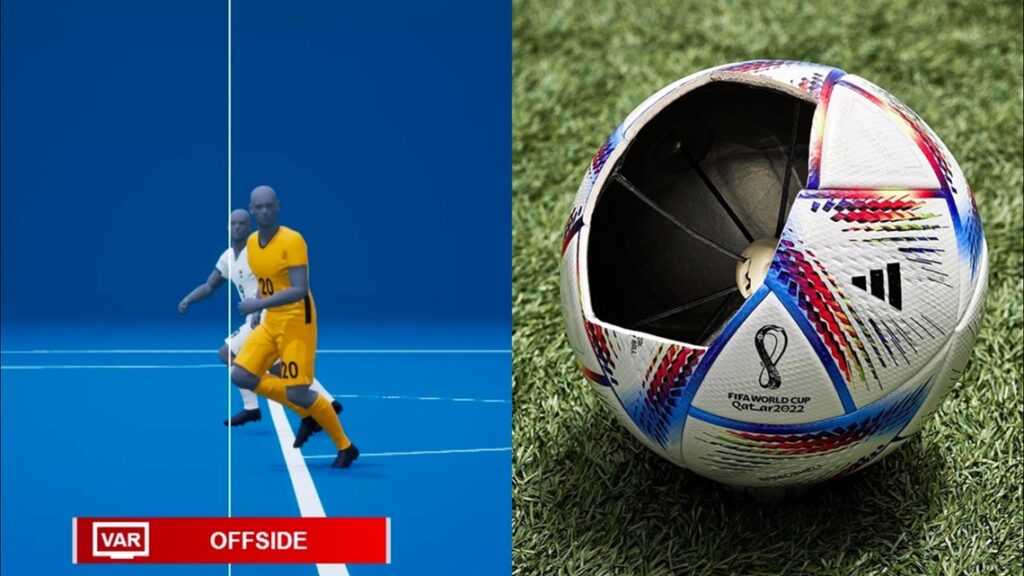Soccer Ball Technology: The Evolution of the Game’s Most Essential Equipment
Soccer is a game that has been played for centuries, and while the rules and equipment have changed over time, one thing remains constant: the importance of the soccer ball. The ball is the heart of the game, and without it, there would be no soccer. In this article by fcscout.com, we’ll explore the history and evolution of soccer ball technology, from its humble beginnings to the high-tech designs used in the modern game.

The Early Days of Soccer Ball Technology
The earliest soccer balls were made from a variety of materials, including animal bladders, stitched leather, and even human skulls. These early balls were crude and unpredictable, making it difficult for players to control their shots and passes.
In the mid-19th century, the first standardized soccer balls were introduced. These balls were made from leather and had an inner rubber bladder to help them maintain their shape and bounce. The size and weight of the ball were also standardized, making it easier for players to adapt to different playing conditions.
Advances in Soccer Ball Technology
Over the years, advances in manufacturing and materials science have led to significant improvements in soccer ball technology. In the early 20th century, rubber was introduced as a material for soccer ball bladders, providing better durability and air retention than the previous leather bladders.
In the 1950s, the introduction of synthetic materials such as polyurethane and PVC revolutionized soccer ball design. These materials were lightweight, durable, and provided better control and accuracy for players.
In the 1970s, the introduction of the modern 32-panel soccer ball design further improved the ball’s aerodynamics and control. The 32-panel design featured a more uniform surface with fewer seams, which reduced the ball’s tendency to deviate in flight.
High-Tech Soccer Ball Designs
In recent years, soccer ball technology has taken a leap forward with the introduction of high-tech designs that incorporate advanced materials and manufacturing techniques.
One of the most significant developments in soccer ball technology is the use of micro-texture designs on the surface of the ball. Micro-texture designs help to improve the aerodynamics of the ball and give players more control over their shots. This technology is used in many of the high-end soccer balls used by professional players.

Another innovation in soccer ball design is the use of foam layers inside the ball. Foam layers help to improve the ball’s accuracy and reduce its weight, making it easier for players to control and manipulate the ball during play.
High-tech soccer balls also feature advanced bladder systems that provide better air retention, ensuring that the ball stays inflated for longer periods of time. This technology helps to maintain the ball’s shape and consistency, allowing players to focus on their game without worrying about the ball’s performance.
The Future of Soccer Ball Technology
As technology continues to advance, the future of soccer ball design is bright. Manufacturers are constantly experimenting with new materials and designs to improve the performance of soccer balls.
One potential future development is the use of smart technology in soccer balls. Smart soccer balls could feature sensors that provide real-time data on the ball’s position, speed, and trajectory. This information could be used to provide players with instant feedback on their performance and help them make adjustments to their technique.

Another potential future development is the use of environmentally friendly materials in soccer ball production. As the world becomes more aware of the need for sustainable practices, manufacturers may start to use materials that are biodegradable or made from renewable sources.
Conclusion
Soccer ball technology has come a long way since the early days of animal bladders and leather. The evolution of soccer ball technology has led to the development of high-tech designs that provide players with better control, accuracy, and durability. From the introduction of rubber bladders to the development of micro-texture designs and foam layers, soccer ball technology has continued to advance to meet the needs of players at all levels.
While the future of soccer ball technology is uncertain, one thing is clear: innovation will continue to play a key role in the evolution of the game. As new materials and manufacturing techniques become available, manufacturers will continue to experiment with new designs and technologies to improve the performance of soccer balls.
At the same time, it’s important to remember the role that tradition and history play in the game of soccer. While the technology behind the soccer ball has evolved over time, the heart of the game remains the same. The thrill of scoring a goal, the excitement of a close match, and the camaraderie of playing with teammates are all part of what makes soccer such a beloved sport around the world.
As players and fans continue to celebrate the game of soccer, it’s important to remember the importance of the soccer ball as a symbol of the game’s enduring legacy. Whether you’re a professional player, a weekend warrior, or simply a fan of the game, the soccer ball remains at the heart of the beautiful game.
EXPLORE MORE CLUBS!
Explore more professional clubs by continent.






